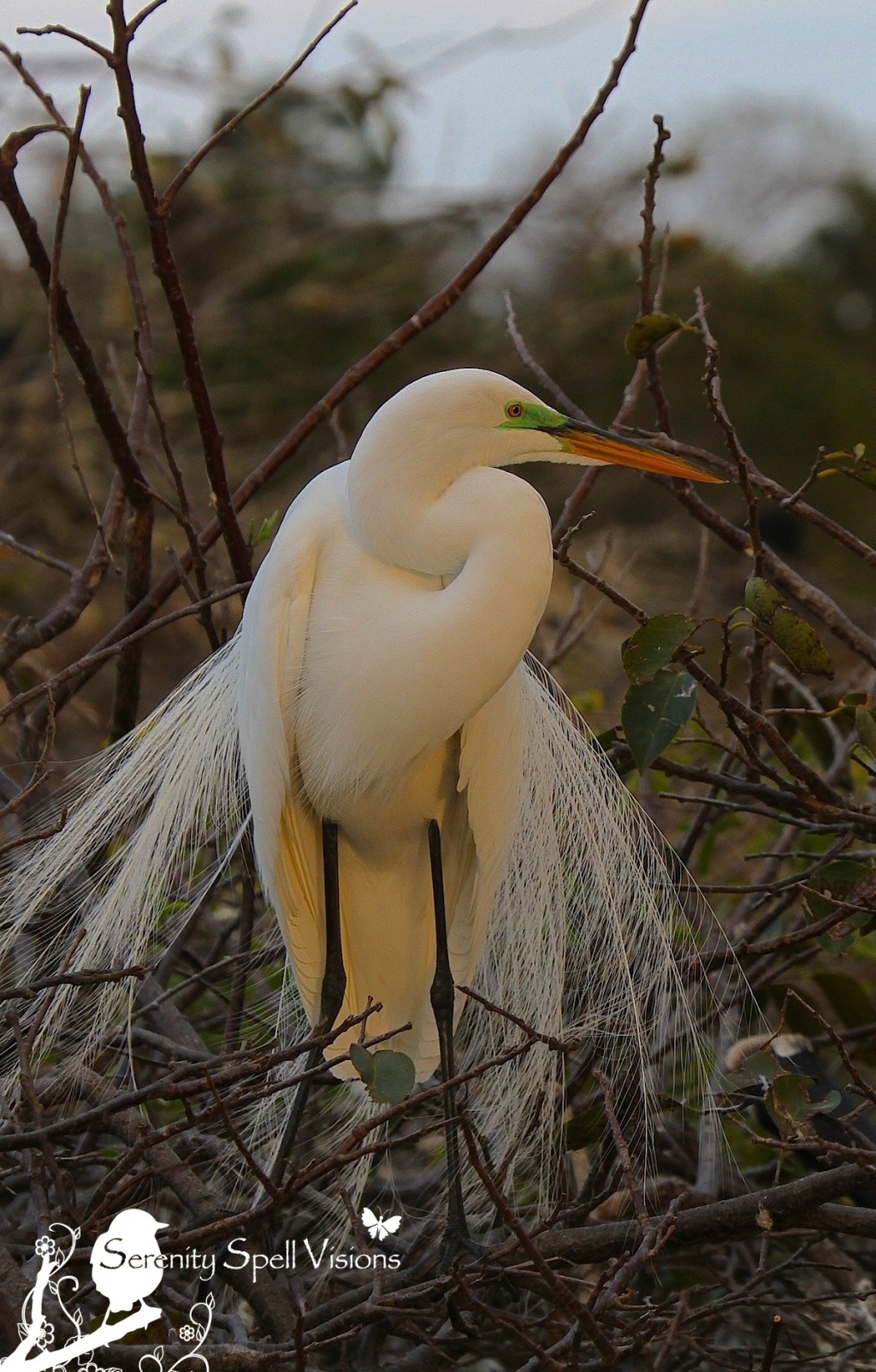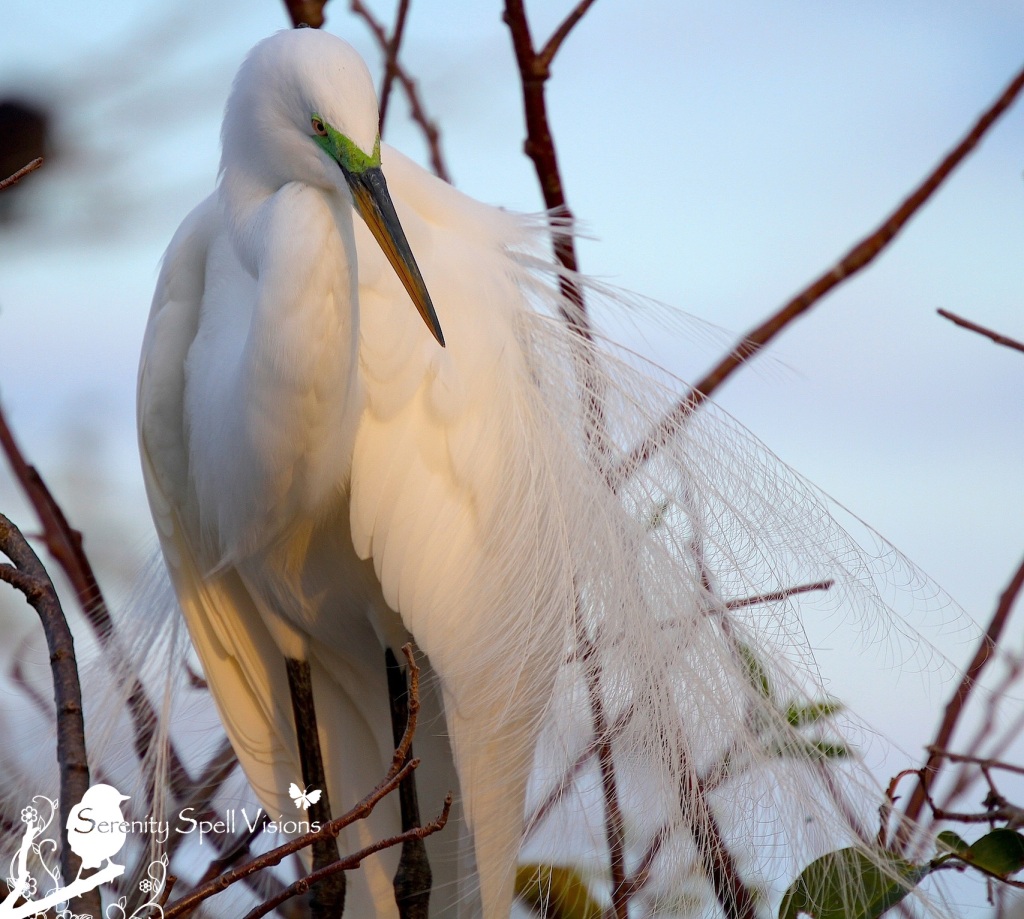The Show
The Great egrets of South Florida’s wetlands have been putting on the most wondrous displays in the rookeries. Appropriate timing for Valentine’s Day…. It’s hard not to think that I should be trying a wee bit more, after observing such grand shows of attracting mates.
The feathers of the Great egret are stunning, almost unreal; sadly, these beautiful birds were hunted mercilessly — nearly to the point of extinction, their numbers decimated by 95 percent — towards the end of the 19th century. Their breeding plumage was especially prized, and their treasured feathers were used in hats across the globe.
With conservation measures enacted, their numbers grew throughout the 20th century. While wetland habitat loss is once again threatening their existence, these birds have a high adaptability to human habitation. Of course, the loss of wetland ecosystems remains another issue altogether.
During the breeding season, the Great egret displays long, elegant plumes on its back, which are used in courtship displays. Like a peacock, these feathery plumes spread out like a fan. (Outside the breeding season, these long feathers disappear.) During this time, the lore (the area between the bill and the eyes) may turn vibrant green. Nature’s colors are brilliant….
The male Great egrets will choose a specific display area, which will later become the nesting site. Nests are usually over water, far off the ground — high in the rookeries, as in our area. He (HE!) builds the nest with long sticks and twigs before pairing up with a female, at which point they both work to complete the nest — although it’s usually the male who finishes it.






















